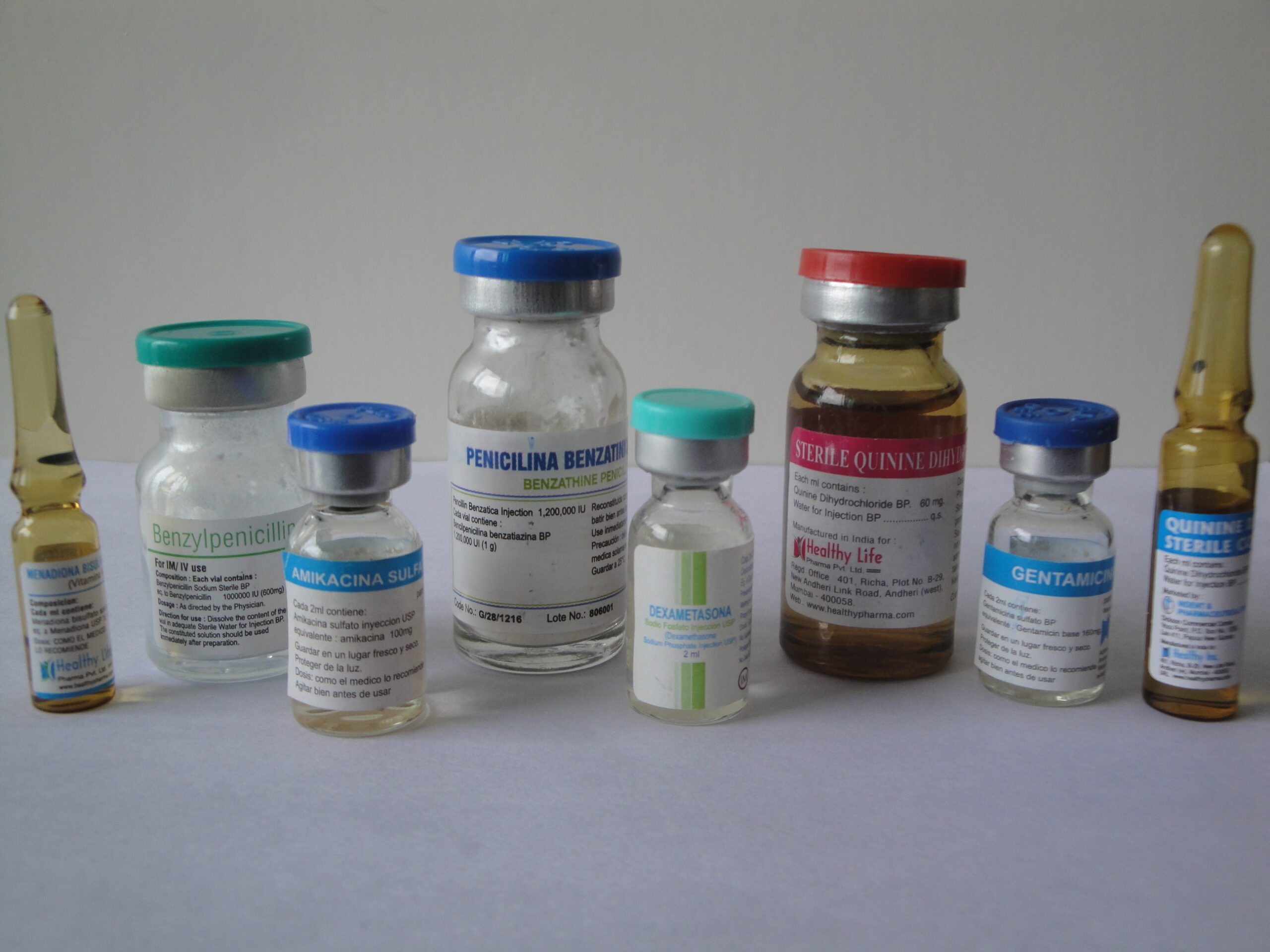Description
amoxycillin sodium & Sulbactam sodium veterinary injection
Amoxicillin sodium and sulbactam sodium combination in veterinary medicine is often used to treat a variety of bacterial infections in animals. This combination is especially effective against bacteria that produce beta-lactamase, an enzyme that can break down certain antibiotics, rendering them ineffective. Here are some common uses of amoxicillin sodium and sulbactam sodium for veterinary injection:
Skin and Soft Tissue Infections: This combination is used to treat infections involving the skin and soft tissues, such as wounds, abscesses, and cellulitis.
Respiratory Tract Infections: Amoxicillin and sulbactam can be employed to treat respiratory infections, including pneumonia and bronchitis.
Urinary Tract Infections: The combination may be used to address bacterial infections in the urinary tract.
Intra-abdominal Infections: Infections within the abdominal cavity, such as peritonitis, may be treated with amoxicillin sodium and sulbactam sodium.
Mastitis: This combination can be used to treat bacterial mastitis, an inflammation of the mammary glands in lactating animals.
Joint and Bone Infections: Amoxicillin and sulbactam may be prescribed for bacterial infections affecting joints or bones.
Post-Surgical Prophylaxis: In some cases, veterinarians may administer this combination as a preventive measure against post-surgical infections.
It is important to note that the dosage, frequency, and duration of treatment will vary depending on the specific animal, the severity of the infection, and the type of bacteria involved. Veterinary professionals determine the appropriate treatment plan based on factors such as the animal’s weight, overall health, and the results of diagnostic tests.
As with any antibiotic, it is crucial to follow the veterinarian’s instructions carefully and to complete the entire course of treatment, even if the animal appears to be improving. Failure to do so may contribute to the development of antibiotic resistance.
Always consult with a veterinarian before administering any medication to animals, as they can provide specific guidance tailored to the individual case.
Amoxicillin sodium and sulbactam sodium for veterinary injection are commonly used to treat bacterial infections in animals. This combination is effective against a wide range of bacteria, including those that produce beta-lactamase, an enzyme that can break down certain antibiotics like amoxicillin.
Here are some common usages of amoxicillin sodium and sulbactam sodium for veterinary injections:
Skin and Soft Tissue Infections: These antibiotics may be used to treat bacterial infections affecting the skin, subcutaneous tissues, and other soft tissues.
Respiratory Infections: Amoxicillin-sulbactam injections can be prescribed for respiratory tract infections, such as pneumonia, bronchitis, and sinusitis in animals.
Urinary Tract Infections: These antibiotics may be used to combat bacterial infections in the urinary tract.
Intra-Abdominal Infections: Infections in the abdominal cavity, such as peritonitis, may be treated with amoxicillin-sulbactam injections.
Wound Infections: For infected wounds or injuries, veterinarians may use this antibiotic combination to target the bacteria causing the infection.
Post-Surgical Infections: In some cases, these antibiotics might be administered post-surgery to prevent or treat infections.
Joint Infections: Infections affecting joints can be treated with amoxicillin sodium and sulbactam sodium injections.
The dosage and duration of treatment depend on various factors, including the type and severity of the infection, the animal’s weight, and individual health considerations. Veterinarians will determine the appropriate dosage and treatment regimen based on their evaluation of the specific case.
It’s important to note that these antibiotics should only be used under the supervision of a qualified veterinarian. Misuse or overuse of antibiotics can lead to antibiotic resistance, which is a serious global health concern. Always follow your veterinarian’s instructions and complete the full course of treatment, even if the animal appears to be improving before the medication is finished.
Amoxicillin sodium and sulbactam sodium combination is commonly used in veterinary medicine for the treatment of bacterial infections in animals. The combination of amoxicillin and sulbactam is effective against a broad spectrum of bacteria, and it is particularly useful when dealing with infections caused by bacteria that produce beta-lactamase, an enzyme that can render certain antibiotics ineffective.
Here are some common usages of amoxicillin sodium and sulbactam sodium for veterinary injections:
Skin and Soft Tissue Infections: These antibiotics may be used to treat infections of the skin, subcutaneous tissues, and wounds caused by susceptible bacteria.
Respiratory Infections: Amoxicillin and sulbactam may be prescribed for respiratory tract infections, such as pneumonia or bronchitis in animals.
Urinary Tract Infections: These antibiotics may be used to treat urinary tract infections caused by susceptible bacteria.
Intra-Abdominal Infections: Amoxicillin and sulbactam may be indicated for certain intra-abdominal infections in veterinary patients.
Bone and Joint Infections: Infections of the bones and joints may be treated with this antibiotic combination.
Post-Surgical Prophylaxis: Veterinary surgeons may use amoxicillin and sulbactam to prevent bacterial infections after surgical procedures.
It’s crucial to note that the specific dosage, frequency of administration, and duration of treatment can vary depending on the type and severity of the infection, as well as the species, size, and health condition of the animal. Veterinarians will determine the appropriate course of treatment based on these factors.
As with any antibiotic use, it’s important to follow the veterinarian’s instructions carefully, complete the full course of treatment, and avoid using antibiotics without proper diagnosis and prescription. Overuse or misuse of antibiotics can contribute to the development of antibiotic resistance, which is a serious concern in both human and veterinary medicine. Always consult with a veterinarian for guidance on the appropriate use of antibiotics in animals.



